Shrinky Dinks ®
Shrinky Dinks® are an art/craft toy invented in 1973 by Betty Morris of Brookfield, Wisconsin. These toys reached the height of their popularity in the 1980s. Shrinky Dinks® consist of thin, flexible sheets of polystyrene, a common polymer. Prior to heating, the thin, flexible sheets can be colored and cut into shapes. When heated in the oven, the plastic shrinks to approximately 1/3 of its original size, and becomes 9 times thicker and more rigid, while retaining the colored design.
Shrinky Dinks® can be purchased from a number of retailers such as JoAnn™ Fabrics, Michaels©, etc. However, they can also be easily obtained from polystyrene containers (recycled plastic #6), especially the clear "clamshells" used for sandwiches, salads, etc. These containers can be cut, sanded, and decorated just like Shrinky Dinks®. The special properties of this product are due to the manufacturing process used to form polystyrene into thin sheets.
The properties of all solid materials, including polymers, depend on their processing history. The temperature, method, and speed of processing are key variables. Processing refers to the technology used to convert a raw material (a polymer, for example) into an article of a certain shape. Most plastic films and sheets are produced by extrusion.
In the extrusion process, the raw material is conveyed down a heated barrel by a rotating screw. The material melts as it proceeds down the barrel and is forced through a die which gives it its final shape. The raw polystyrene is melted at 190°C and extruded through a slot die. The resulting film exits the die at a temperature above its glassy transition point (around 100°C). This means the material is soft and rubbery. The forced flow through the die causes stretching in the direction of flow, but to produce a biaxially stretched film, further stretching in the direction perpendicular to the machine direction is required. The stretched film is then taken up by several rollers. These rollers are usually chilled to quickly cool (quench) the rubbery film.
The rapid cooling of the film maintains the stretched shape. When the film is heated, the polystyrene chains return to their more random configuration. The polystyrene chains are said to "remember" their most stable (random) configuration, even though they can be "frozen" into a less stable configuration by rapid cooling during manufacture. The behavior of the biaxially-oriented polystyrene is unusual. Most objects soften or melt when heated, or sometimes they decompose if the temperature is high. The polystyrene shrinks dramatically, but its mass stays the same. The decrease in the area is compensated for by an increase in the thickness.
The following experiment demonstrates the phenomenon described above.
SAFETY NOTE: Adult supervision is required during cutting and baking!
Supplies needed:
- Shrinky Dinks® plastic sheets
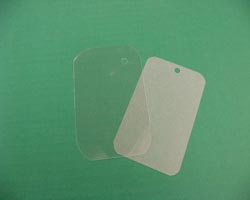
- Colored pencils or permanent markers
- Scissors and paper punch
- Toaster oven or conventional oven
- Aluminum foil or brown paper
Procedure:
1. Design and decorate the plastic sheets as desired. Colored pencils can be used on the frosted (pre-sanded) product. If using the transparent (non-sanded) sheets, permanent markers will be needed.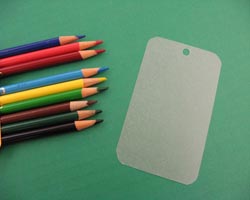
2. Pieces can be cut before or after decorating. Cut sheets in circles or shapes as smoothly as possible. Edges become sharper after shrinking, so round corners a little. You can create fancy edges with designer scissors, or use small manicure scissors to do detailed cut work.
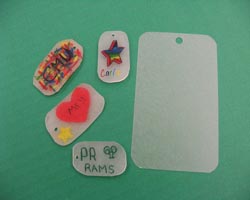
3. Punch a hole before baking. Remember that the hole will shrink, so make it large enough for your application. A standard size paper punch is ideal for most projects.
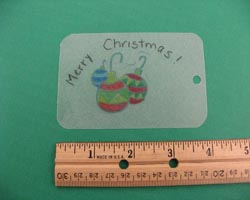
4. Bake in a toaster oven or conventional oven. Shrinky Dinks® do not work with microwave ovens! Place Shrinky Dinks® pieces, colored side up, on tray or cookie sheet covered with foil or brown paper. Heat at 325°F (163°C) for 1 to 3 minutes. Watch as the Shrinky Dinks® shrink. After the pieces lay flat, allow an additional 30 seconds of baking time to complete the process.
5. Remove from the oven and lightly press down to flatten completely. Occasionally a piece may stick to itself. If this happens, reach into the oven carefully, and pull apart gently with a knife.
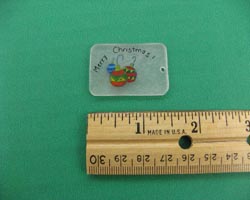
6. Allow pieces to cool before handling (about 3-5 minutes).